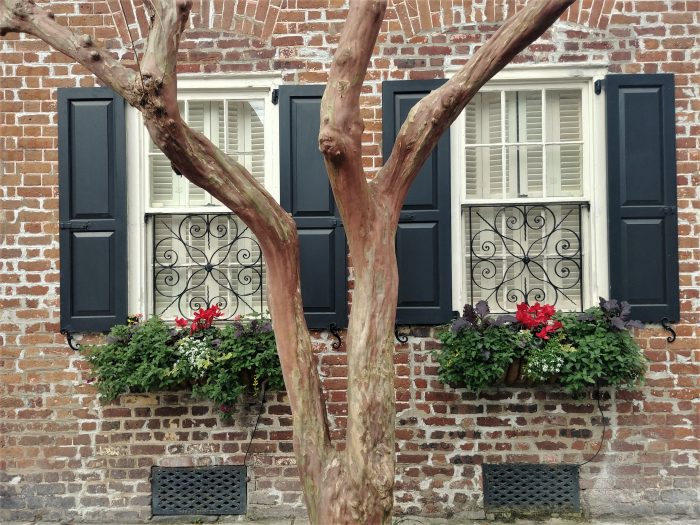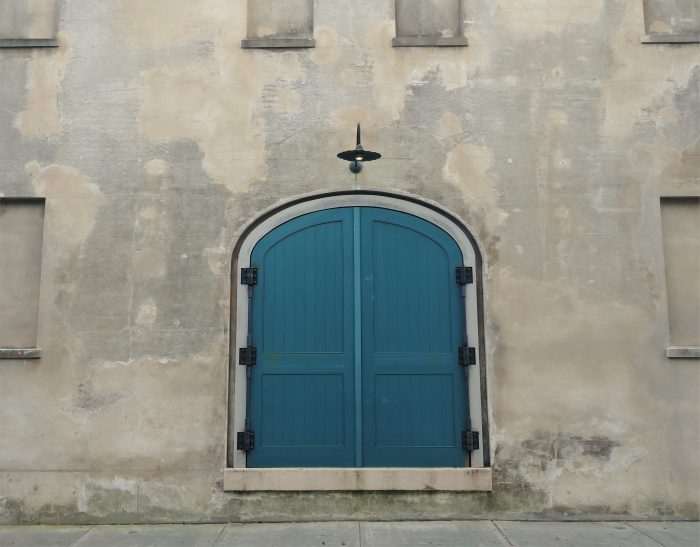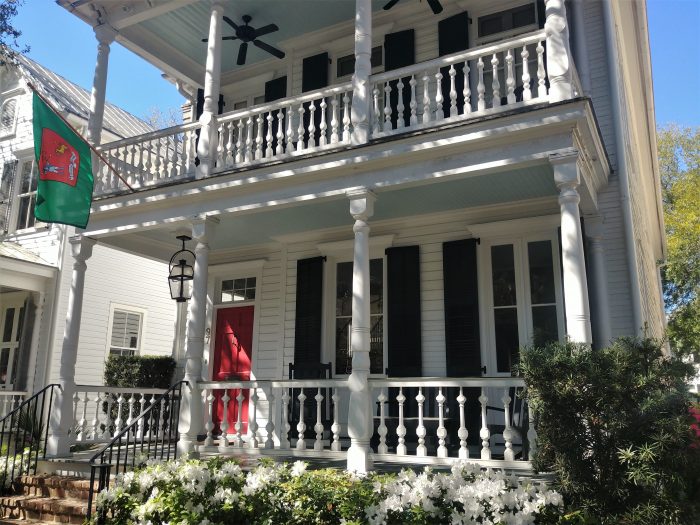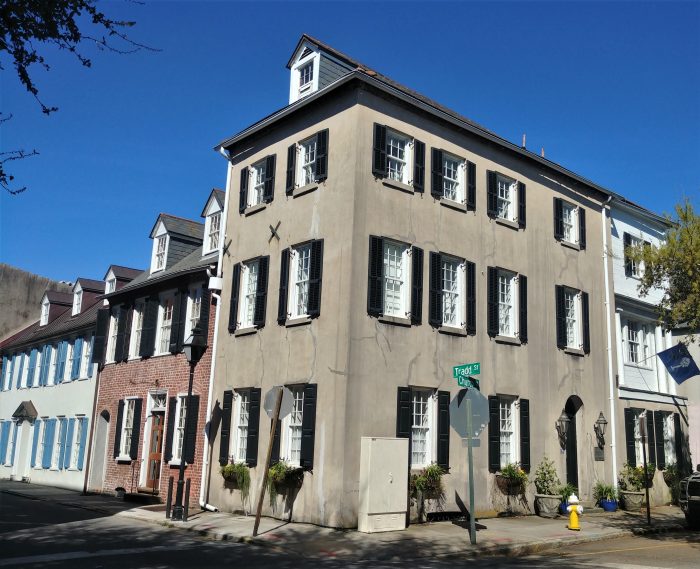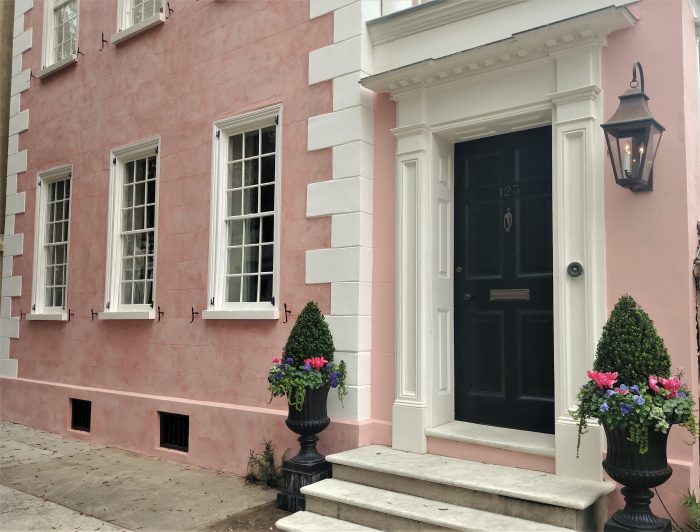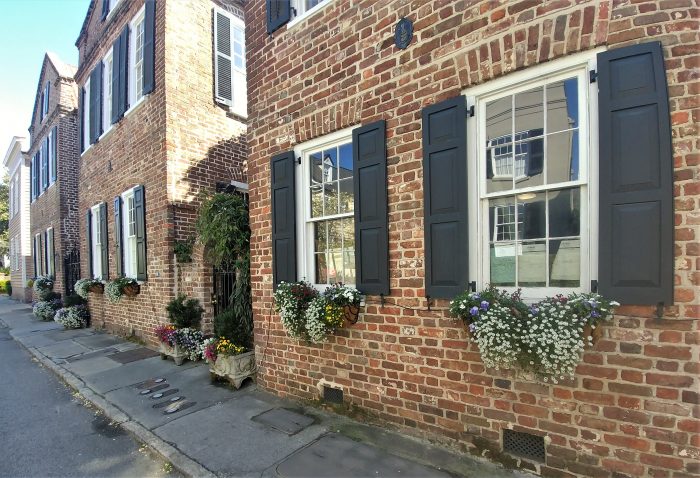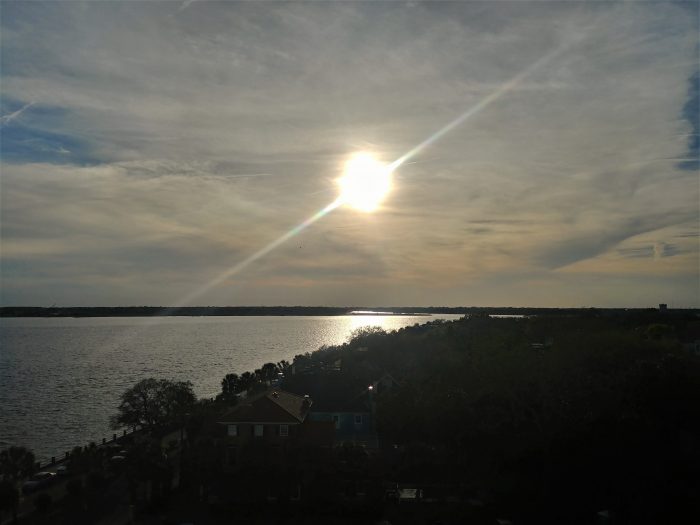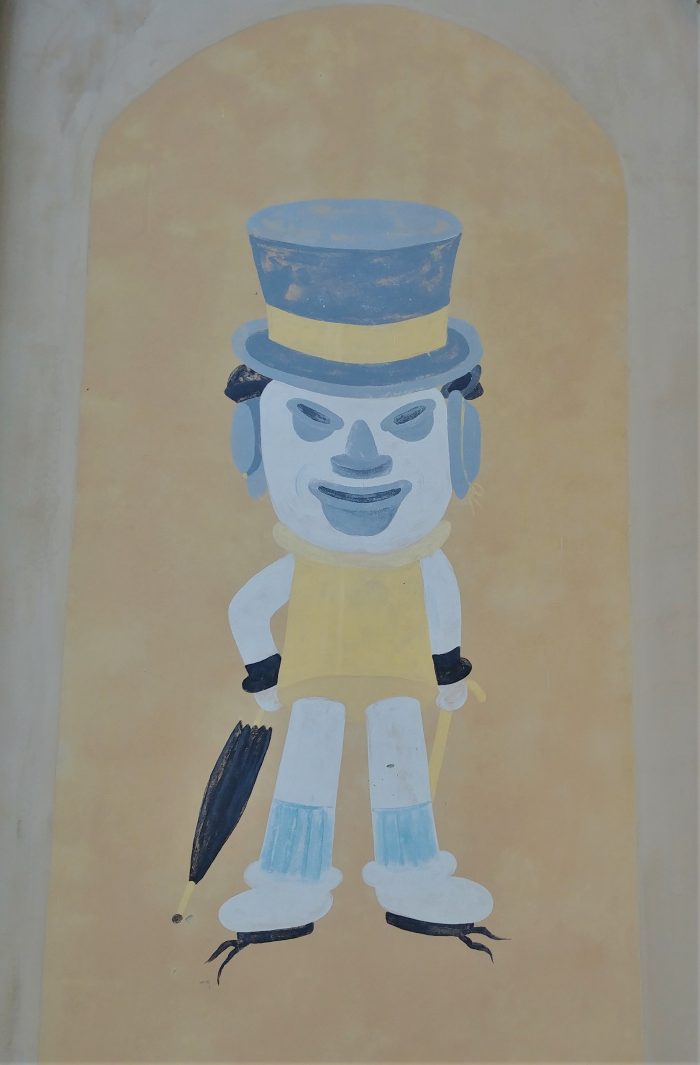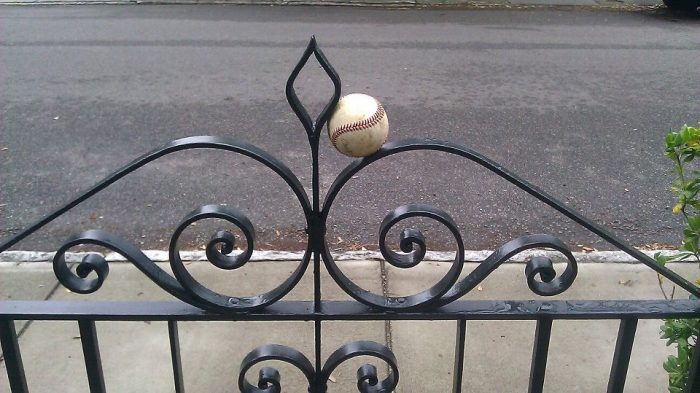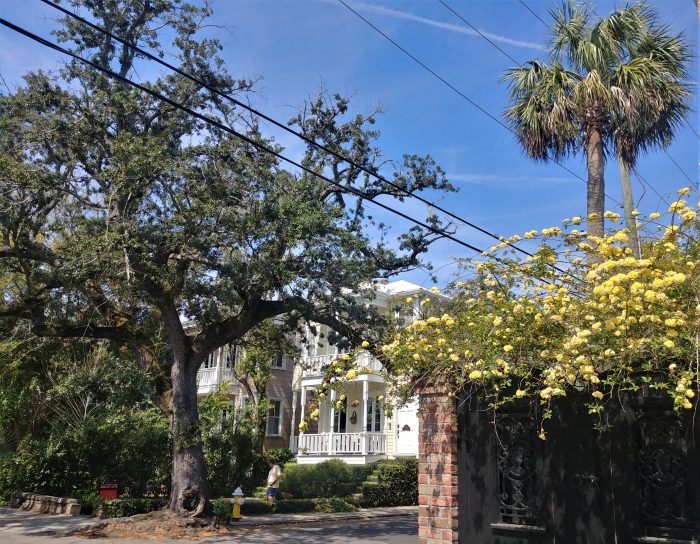An old crepe myrtle tree against the backdrop of an even older house (built in 1742) on Tradd Street. The crepe myrtle is the longest blooming plant in Charleston.
Behind the Blue Door
This eye-catching door, on Queen Street, is the stage door to the Dock Street Theater — the oldest theater in America.
Haints
The ceilings of the porches of this pretty house on Church Street are painted “haint blue” — to keep the “haints” away. A haint is an spirit or ghost, which you definitely don’t want in your house. (Some people say it also helps keeps the bugs away, but that’s just a side benefit.)
A Hot Corner
This beautiful corner is the intersection of Tradd and Church Streets. It traces its roots to well before the American Revolution. George Washington even slept just a few houses up the street on a presidential visit to Charleston in 1791.
Quoins
This handsome pink house was built in 1795. The toothy trim, called quoins, is found on many Charleston masonry and stucco buildings. The quoins usually serve two purposes — to strengthen the construction and for decoration. They do add a certain flair!
King Street Flowers
Some wonderful flower boxes and pots on King Street, between Broad and Tradd Streets. These mid-1800’s houses sure look good.
Fort Sumter House
A lovely late afternoon view of the Ashley River from the Fort Sumter House, which was once the home of John F. Kennedy when he was posted to Charleston while in the navy. From there he was shipped to the Pacific, where he took command PT-109.
The Hat Man
First painted around 1892 to advertise a haberdashery, located on Church Street the Charleston Hat Man is made up of 16 hats of 12 different styles.
Play Ball!
This gate was designed by the wonderful blacksmith, Phillip Simmons. The baseball landed there, a few years ago, during a game of catch between father and son. The gate itself was made under Mr. Simmon’s direction on the National Mall in Washington, DC during the Smithsonian’s American Folklife Festival.
Queen and Logan
This pretty scene at the corner of Queen and Logan Streets is right across from the Queen Street Grocery — one the best sources in Charleston for crepes and other great food.
- « Previous Page
- 1
- …
- 68
- 69
- 70
- 71
- 72
- …
- 188
- Next Page »
